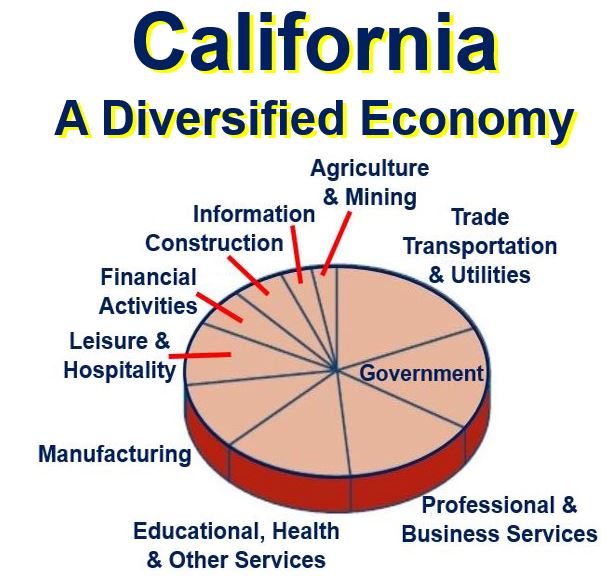Content

Here are the top ten mergers and acquisitions benefits that you should know. Companies operating in different markets, but selling the same products, combine in order to access a larger market and larger customer base. A key valuation tool in M&A, a discounted cash flow (DFC) analysis determines a company’s current value, according to its estimated future cash flows. Forecasted free cash flows (net income + depreciation/amortization (capital expenditures) change in working capital) are discounted to a present value using the company’s weighted average cost of capital (WACC). Admittedly, DCF is tricky to get right, but few tools can rival this valuation method. With an enterprise-value-to-sales ratio (EV/sales), the acquiring company makes an offer as a multiple of the revenues while being aware of the price-to-sales (P/S ratio) of other companies in the industry.

As a result, these leaders are more successful at sizing up targets and executing acquisition strategies. A merger is a type of business combination where two companies come together to integrate each other in their company. In contrast, an acquisition is a transaction where one company buys another company to either combine or operate separately. Two companies with different cultures cause clashes that lead to decreased morale and lower productivity.
M&A can be used to generate synergies:
According to a survey by Deloitte, 92 percent of executives at U.S. corporations and private equity firms expect merger and acquisition deal volume to increase or stay the same over the next 12 months. Mergers and acquisitions (M&A) have become increasingly popular among large corporations as a business strategy. However, small and medium-sized businesses may hesitate to engage in M&A due to the perceived complexities and risks involved. In management acquisitions, which are sometimes referred to as management-led buyouts (MBOs), executives of a company buy a controlling stake in another company, in order to de-list it from an exchange and make it private. But for management acquisitions to occur, a majority of a company’s shareholders must approve of the transaction.

Please do not include any confidential or sensitive information in a contact form, text message, or voicemail. The contact form sends information by non-encrypted email, which is not secure. Submitting a contact form, sending a text message, making a phone call, or leaving a voicemail does not create an attorney-client relationship. When two companies doing the same activities come together and become one company, it might mean duplication and over capability within the company, which might lead to retrenchments.
M&A Effects
The potential risks include communication problems, concerns about employee retention, and dealing with cultural differences between the two organizations. When considering a merger or acquisition, determining the value of the target company is crucial. There are several methods used to assess the value of a company, including the Price-To-Earnings Ratio (P/E Ratio), Enterprise-Value-To-Sales Ratio (EV/Sales), Discounted Cash Flow (DCF), and Replacement Cost. Synergies are achieved through the integration of similar business processes, sharing of best practices, and elimination of redundant costs. This results in greater efficiency and productivity, ultimately leading to cost savings.
During the due diligence phase, which may cover legal, financial, and fiscal areas, the primary objective is to identify significant risks that may arise from the potential merger or acquisition. This exercise is conducted to determine fair pricing and increase bargaining power. Companies can achieve economies of scale and improve their bargaining power with suppliers and customers. Eliminating a competitor increases a company’s share of the market and reduces competition, which can lead to higher pricing power and increased profitability.

Synergy miscalculations can also feed overpayment, as they may be rolled into the purchase price so your company gains control over assets before fully reaping benefits from them. Without a thorough information-seeking process, your firm could get caught up in obligations it’s not yet ready to assume, such as litigation issues and complicated tax matters. With the staff of both organizations combined into one, the merged organization can benefit from a more diverse and skilled workforce.
Connect With a Financial Advisor
The best deals for sellers usually occur when there are multiple potential bidders. By leveraging the competitive situation, sellers can often obtain a higher price, better deal terms, or both. Sellers often try to set up an auction or competitive bidding process to avoid being boxed in by a demand for exclusivity by a bidder. By having multiple bidders, each bidder can be played off against the other to arrive at a favorable deal. Even if the reality is that there is only one serious potential bidder, the perception that there are multiple interested parties can help in the negotiations.
One solution is to acquire competitors so that they are no longer a threat. Companies also complete M&A to grow by acquiring new product lines, intellectual property, human capital, and customer bases. By combining business activities, overall performance efficiency tends to increase, and across-the-board costs tend to drop as each benefits of mergers and acquisitions company leverages the other company’s strengths. In a tender offer, one company offers to purchase the outstanding stock of the other firm at a specific price rather than the market price. The acquiring company communicates the offer directly to the other company’s shareholders, bypassing the management and board of directors.
What are the Benefits of Mergers and Acquisitions?
Business founders or owners who want to retire or venture into other business opportunities can sell their company and exit the market. For instance, a marketing agency may acquire a search engine optimization company to boost its digital marketing capabilities. Access to new technologies or expertise can help drive innovation and growth. Additionally, acquiring a company in a different market can provide a brick-and-mortar presence and a foothold there. A merger describes a scenario where two companies unite, and one of the companies ceases to exist after becoming absorbed by the other.
If you and the potential buyer are unable to agree on an acquisition price, consider an “earnout” as a way of bridging this difference of opinion. Merging two companies or acquiring a business can bring several benefits to those involved. However, it is crucial to note that certain drawbacks may arise with mergers and acquisitions that require careful consideration. This article discusses some of the advantages and disadvantages of mergers and acquisitions.
Have tough conversations early and make sure that lines of communication are open and clear from the start. If you can keep personal feelings in check and stay focused on the larger purpose, these potential showstoppers can be avoided. These questions apply whether your organisation is considering a merger or not. As the purpose of a merger is to increase impact, you can’t gauge that potential change unless you know what impact you currently have. Despite the challenges of today’s landscape, growth remains the number one priority for CEOs in 2021. One of the fastest ways to grow is to enter a new market and reach customers who were previously inaccessible.
- Companies also use M&A for corporate tax reasons, although this may be an implicit rather than an explicit motive.
- The deal was perceived as a risky one for Gilead, and its shares fell around 9% on the day it announced the Pharmasset deal.
- Selling companies need to understand that populating an online data room will take a substantial amount of time and require devotion of significant company resources.
- Richard V. Smith is a partner in the Silicon Valley and San Francisco offices of Orrick, Herrington & Sutcliffe, and a member of its Global Mergers & Acquisitions and Private Equity Group.
Unfortunately, the credit crisis that gripped the world later that year also took its toll on Yahoo shares, resulting in the stock trading below $10 by November 2008. Conglomerate merger is a union of companies operating in unrelated activities. The union will take place only if it increases the wealth of the shareholders. In a merger, the boards of directors for two companies approve the combination and seek shareholders’ approval. For example, in 1998, a merger deal occurred between the Digital Equipment Corporation and Compaq, whereby Compaq absorbed the Digital Equipment Corporation.
Integration models reflect hospitals’ and health systems’ strategic goals
More than one company has had value destroyed because of mismanagement at some part of the M&A process. Thus, pulling managers away from the operations of the company can be a major distraction from their performing their day-to-day tasks. An example of this came in 2017 when Google acquired Halli labs, whose founding teams were considered the world’s best AI and ML engineers. Companies like Google, Apple, and Facebook are all considered pioneers in acqui hiring and have made acquisitions in the past decade of small startups principally to get the companies’ founders onto their roster.
Acquiring a company based in another country can result in a wide range of benefits, including lucrative markets and access to new talent. Companies engage in M&A for various reasons, such as growth diversification, synergy, increased market share, and profitability. The process of merging involves a great deal of legal and financial considerations.
- In M&A, it’s vital to have an understanding of the acquiree’s available data, its location and who has access to it.
- However, it does not take into account factors such as profit margins, growth prospects, and other financial metrics.
- Without a robust integration strategy that takes each organization’s values, norms, and assumptions into account, collaboration issues may arise that impede efficiency and delay the consolidation process.
- Accretive mergers increase the earnings per share of the acquiring company.
We’ve all heard about deals where the stars seemed aligned but synergies remained elusive. M&A deals can lead to numerous benefits for companies, including increased economies of scale, cost savings, synergies, market expansion, and increased market power. It is critically important for a successful M&A process that the selling company hire outside counsel that specializes in mergers and acquisitions. Note that the shareholders of both companies may experience a dilution of voting power due to the increased number of shares released during the merger process. This phenomenon is prominent in stock-for-stock mergers, when the new company offers its shares in exchange for shares in the target company, at an agreed-upon conversion rate. The term mergers and acquisitions (M&A) refers to the consolidation of companies or their major business assets through financial transactions between companies.
If you’re thinking of following the same course of action, make sure to grab our free resource. The social media behemoths have realized certain demographics weren’t engaging with their platform. They sought out those demographics and acquired the platforms they were engaged with (Instagram and WhatsApp).
M&A can be used to acquire new talent:
For the acquirer, the impact of an M&A transaction depends on the deal size relative to the company’s size. A company may be able to withstand the failure of a small-sized acquisition, but the failure of a huge purchase may severely jeopardize its long-term success. For the target company, an M&A transaction gives its shareholders the opportunity to cash out at a significant premium, especially if the transaction is an all-cash deal.